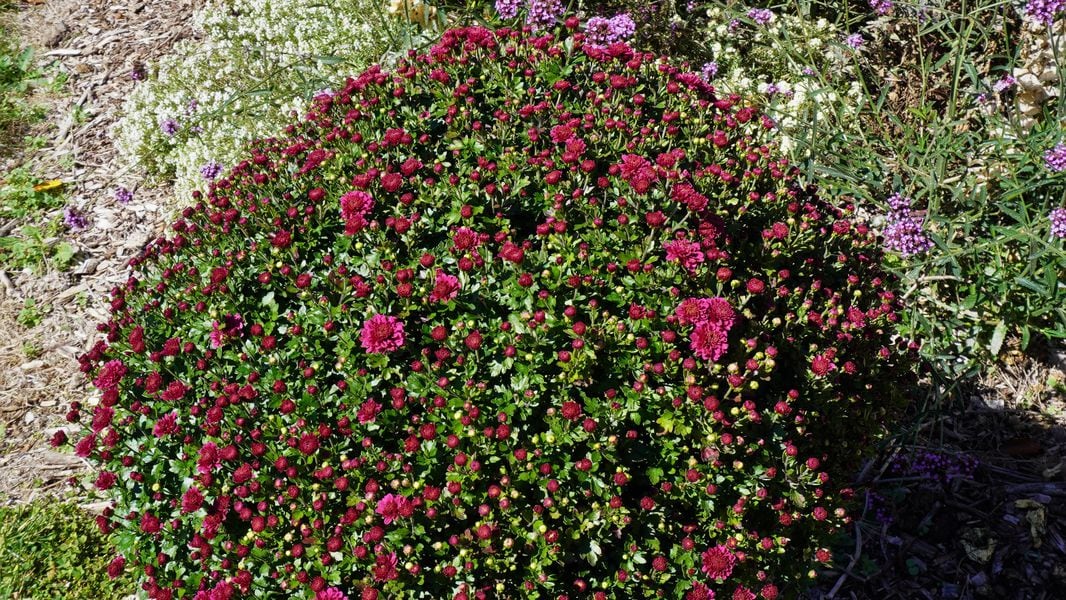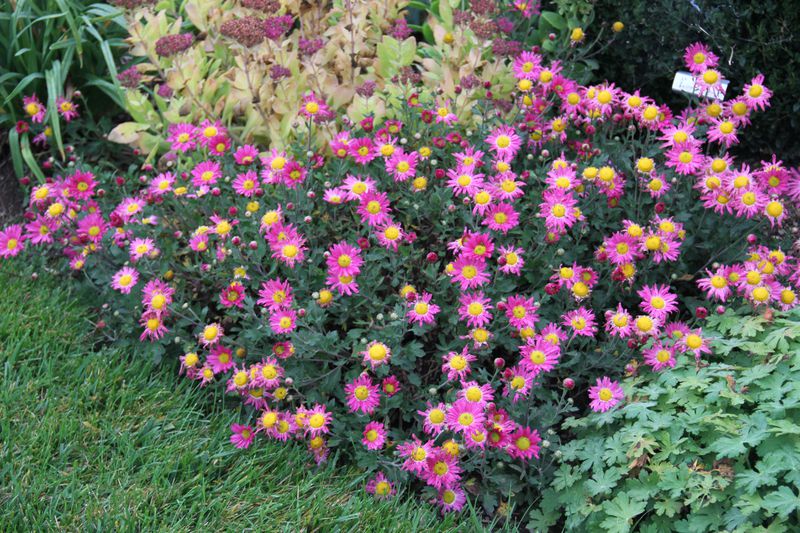Originally posted in the Dayton Daily News. GARDENING
Have you noticed that “hardy” mums aren’t necessarily hardy and don’t come back in the spring? I have had many gardeners complain about planting mums in the fall only to have them die.
I have two answers for you. One, just consider them annuals and enjoy their fall color and plant them every year in late summer. The other answer takes a bit of work, but you are more likely to be successful.

I believe that much of the problem comes from the fact that once they finish blooming people pretty much forget about them and expect them to survive.
Mums are considered perennials and sometimes can be found in the spring at garden centers and in catalogues. Mums planted in the spring tend to have little trouble surviving.
They have plenty of time to grow throughout the season and establish a root system. Typically, they overwinter with little trouble.
I purchased mums recently and they are absolutely gorgeous. They are almost in full bloom in my containers. I didn’t plant them but just sat them down in my containers. I will plant them in the ground after they finish blooming, however, that may not be until the end of October.
The best time to transplant, move, or plant perennials later in the season is in late August or early September. This allows for good root development prior to the ground freezing.
The later perennials are planted, the lower the survival rate. When planted in late October, there is little time for the plants to develop a root system to anchor into the soil.

In order to increase the probability of your fall decoration mums surviving the winter, there are a few things that should be done.
First, just because the blooms are finished, DON’T stop watering, particularly if they are in a pot. Remember the roots are still alive and need water. Even more so in pots or containers.
Plant them in the ground as soon as they are no longer decorative. Water them if it’s dry, until we get a few good hard freezes.
The most important steps — don’t cut them back and cover the entire plant with mulch, up to at least six to eight inches high on the plant. Don’t do it at planting, do it after the ground freezes. This is likely some time after Thanksgiving.
The mulch helps to prevent freezing and thawing that leads to heaving. Next spring, be sure to remove the mulch sometime in late March and cut the foliage back. If you are successful, you will see new growth beginning in April.
Or, just treat them as annuals and buy new next fall.
Don’t forget there are other plants that people can use for fall garden displays including flowering cabbage and kale and pansies. These plants sometimes overwinter and look just as good in the spring.
Pamela Corle-Bennett is the state master gardener volunteer coordinator and horticulture educator for Ohio State University Extension. Contact her by email at bennett.27@osu.edu.
